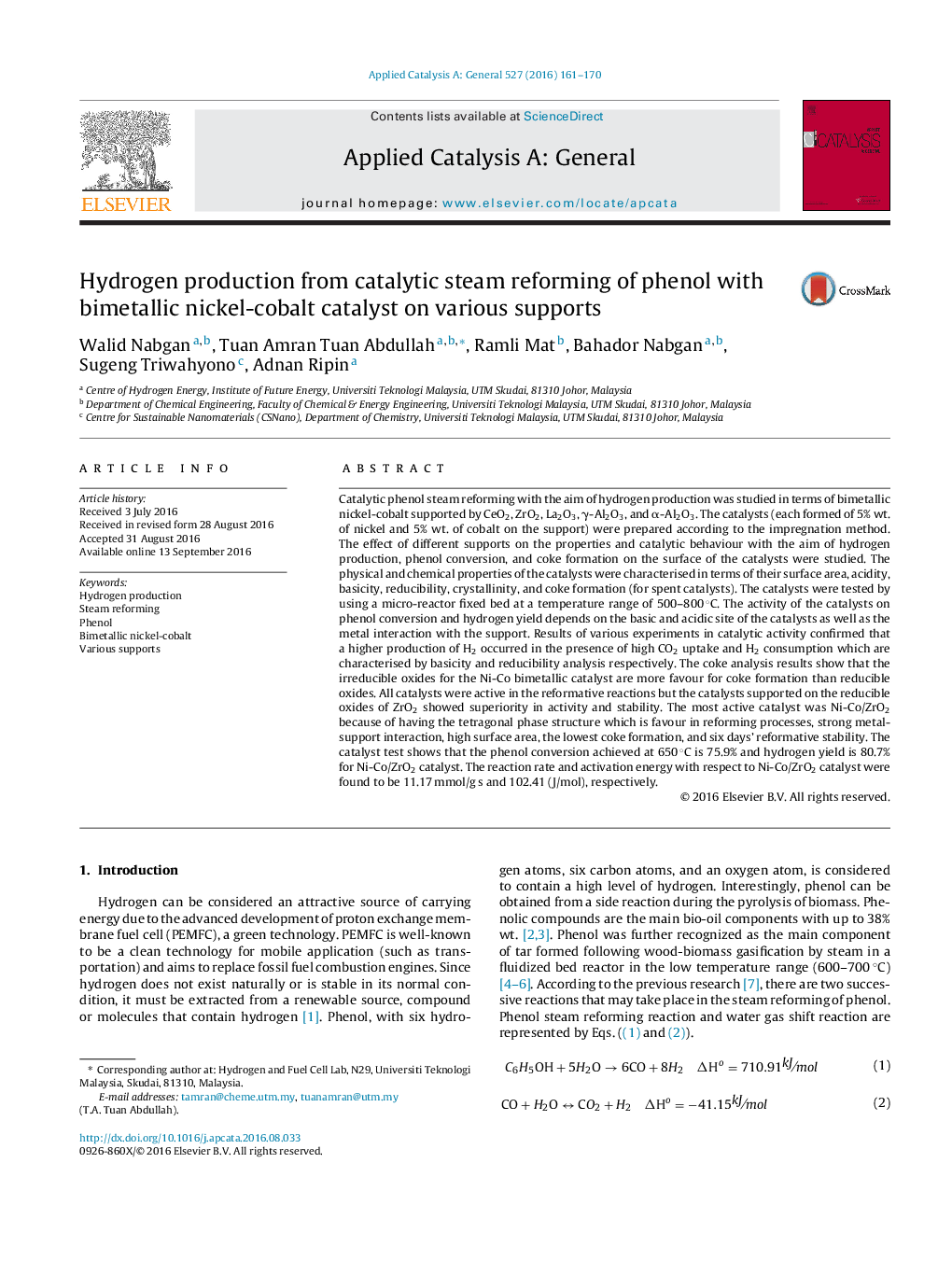| Article ID | Journal | Published Year | Pages | File Type |
|---|---|---|---|---|
| 6453335 | Applied Catalysis A: General | 2016 | 10 Pages |
â¢Ni-Co supported by CeO2, ZrO2, La2O3, γ-Al2O3, and α-Al2O3 were used for hydrogen production from phenol steam reforming reaction.â¢The most active catalyst was Ni-Co/ZrO2 because of having the tetragonal phase structure which is favour in reforming processes.â¢The catalyst test shows that the phenol conversion achieved at 650 °C is 75.9% and hydrogen yield is 80.7% for Ni-Co/ZrO2 catalyst.
Catalytic phenol steam reforming with the aim of hydrogen production was studied in terms of bimetallic nickel-cobalt supported by CeO2, ZrO2, La2O3, γ-Al2O3, and α-Al2O3. The catalysts (each formed of 5% wt. of nickel and 5% wt. of cobalt on the support) were prepared according to the impregnation method. The effect of different supports on the properties and catalytic behaviour with the aim of hydrogen production, phenol conversion, and coke formation on the surface of the catalysts were studied. The physical and chemical properties of the catalysts were characterised in terms of their surface area, acidity, basicity, reducibility, crystallinity, and coke formation (for spent catalysts). The catalysts were tested by using a micro-reactor fixed bed at a temperature range of 500-800 °C. The activity of the catalysts on phenol conversion and hydrogen yield depends on the basic and acidic site of the catalysts as well as the metal interaction with the support. Results of various experiments in catalytic activity confirmed that a higher production of H2 occurred in the presence of high CO2 uptake and H2 consumption which are characterised by basicity and reducibility analysis respectively. The coke analysis results show that the irreducible oxides for the Ni-Co bimetallic catalyst are more favour for coke formation than reducible oxides. All catalysts were active in the reformative reactions but the catalysts supported on the reducible oxides of ZrO2 showed superiority in activity and stability. The most active catalyst was Ni-Co/ZrO2 because of having the tetragonal phase structure which is favour in reforming processes, strong metal-support interaction, high surface area, the lowest coke formation, and six days' reformative stability. The catalyst test shows that the phenol conversion achieved at 650 °C is 75.9% and hydrogen yield is 80.7% for Ni-Co/ZrO2 catalyst. The reaction rate and activation energy with respect to Ni-Co/ZrO2 catalyst were found to be 11.17 mmol/g s and 102.41 (J/mol), respectively.
Graphical abstractDownload high-res image (138KB)Download full-size image
